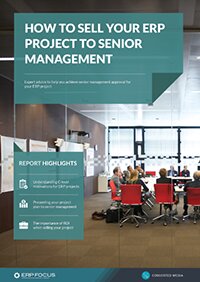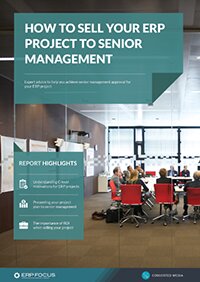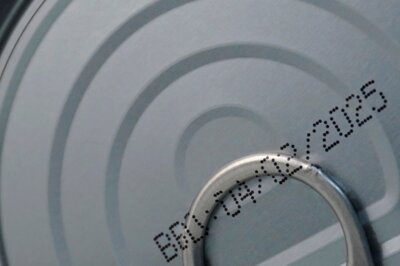Using ERP for a competitive advantage
Many companies implement ERP to increase operational efficiency and, through that, reduce costs. Articles on this website discuss opportunities for reducing administration costs, purchasing costs, and others, and such savings have been used to justify investments since the earliest days of commercial computing.
Readers of a certain age or, more likely, those with an interest in computing history, will remember the 'Lyons Electronic Office', or LEO, from 1951 which aimed at reducing clerical costs whilst speeding up the generation of management information.
Whether or not LEO delivered reduced costs is debatable, and the value of even real-time information, if it doesn't result in real-time action, is something that will be addressed in the future. Too tight a focus on cost-cutting can be counterproductive because it can lead to companies choosing to use cheaper materials or employing cheaper people.
And, taken to extremes, every company could reduce their costs by 100% just by laying off all their staff and locking the doors, but they would be reducing their profits by 100% also. Cost reductions can aid competitiveness if they result in price reductions but although reducing costs, if carefully done, is both valid and valuable, for most companies it is a tactic rather than a strategy.
To gain a competitive advantage, companies need to understand what it is they are selling. Take two well-known companies, Rolex and Rolls Royce, and consider what they are selling. Does Rolex sell watches, and does Rolls Royce sell cars? If we want to tell the time we can get a good watch for a fraction of the price of a Rolex and, if we want to get from A to B, many cars will get us there cheaper than a Rolls Royce, so clearly these companies are selling something other than watches and cars.
In fact, they are selling an image and a lifestyle: at the very least, they are selling quality. On perhaps a more prosaic level, a few years ago two manufacturers of office furniture were asked what they sold. The two companies were within a couple of hours' drive of each other, they were of very similar size, and they shared both suppliers and customers.
The CEO of the first replied, “We sell office furniture” but the CEO of the second said, “Lots of companies make office furniture, so we sell service. We sell short delivery lead times and we sell flexibility.”. Only one of those two companies is still in business.
When companies have difficulty understanding what they should be selling, two things can help. The first is talking to their buyers (their buyers are somebody else's customers) to find out what they want from their suppliers. The answers, hopefully, will include things like:
- Quality
- Short delivery lead time
- Reliable delivery promises
Note that, whilst 'competitive prices' is an acceptable answer, replying 'low prices' indicates that they may not be being correctly targeted because the above measures will almost certainly be compromised. Other articles on this website discuss these objectives in detail but a summary may be useful.
Quality
Poor quality costs money and, eventually, customers. Thankfully, quality management has gone beyond merely catching rejects at the end of the production line to minimizing the chances of their being made in the first place. Good ERP systems help identify problematic materials, suppliers, products, and, indeed, customers and also allow the cost of quality failure to be accurately measured.
Key to this is their ability to track both product and components or ingredients by using serial numbers and lot or batch numbers where appropriate. Regardless of where a problem is identified along the supply chain, ERP can identify where the problem items came from and, just as importantly, where they went.
That latter point is particularly important when common materials or ingredients are used in multiple end products which, of course, may be sold to multiple customers. For many years, companies have achieved this by using hard-copy documents but accuracy and misfiled documents can be a problem and, when a product recall is necessary, the difference between launching a paper chase and simply running a report can be important.
Moving to the cost of quality: companies have the choice of adding rework and rectification operations, and any required materials, to the original works order or raising a new rectification works order. Either way, the required resources (both materials and capacity) can then be properly planned alongside regular work so that solving problems is not done at the price of creating new ones.
Short delivery lead times
In some industries, the ability to react quickly to customer demand can be critical, and companies that can offer short delivery lead times have a significant advantage. Companies that wish to shorten their lead times frequently make little progress or, in fact, fail because they don't appreciate the difference between delivery lead time and production lead time, and concentrate on the latter.
Reducing production lead times is always worth doing because it also has the effect of reducing work in progress (WIP) and that has effects both on shop floor space and on cash flow. But generally, production lead time is only a fraction of delivery lead time.
The reason is that production lead time is measured from the moment that the job hits the shop floor but most companies have an order book. That means that production does not start immediately after the order is received, so delivery lead time is production lead time plus order backlog time.
If it takes one week to make an item (the production lead time) but there is a 6-week order book when the order is received, then the delivery lead time is 1+6 = 7 weeks, and the only way to change that is to increase production capacity markedly by adding extra resources.
That works, but if production capacity is, for example, doubled, then the pressure goes onto the sales department to double long-term order intake also, or there are going to be a lot of under-utilized machines and/or people, and no company can stay viable long term in those circumstances.
Something else is required. The key may be recognizing that not all orders are equal, because some products are more profitable than others, and some customers are more profitable than others, and ERP can help identify those. That allows companies to decide whether they are losing profitable orders because valuable resources are being tied up on less profitable ones.
There are times when companies need every order they can get, but there are also times when marginally profitable orders should be declined so that resources can be freed up for those that will make a real difference to the bottom line.
Reliable delivery lead times
All full-function ERP systems offer a capacity scheduling option that both optimizes availability and allows realistic, and therefore achievable, production schedules to be created and accurate delivery promises to be calculated. And MRP ensures that all materials required to achieve those schedules are available when required.
In addition to considering these things, companies can also consider things from a different perspective, and that is to ask themselves “Why do our customers come to us?”. If the answer is, “because we're cheaper than the competition”, they are in trouble, because then they are in a price war and that ultimately benefits nobody. Not even, in the long term, customers.
Suppliers can, however, benefit from making themselves easy to deal with, and one thing that ERP systems contribute is the ability to recognize their customers' part numbers. Allowing customers to order using their part numbers saves them having to check catalogs to access supplier part numbers (although, if they have a good ERP system, they can do this automatically), and the supplier's system can then quote those customer part numbers back to them on order acknowledgments, delivery notes, and sales invoices.
And that can make a difference. When companies have configurable products (i.e. they have many options), ERP systems offer 'product configurators' that lead salespeople through structured question-and-answer routines. That can not only ensure that all necessary questions are answered, but these routines can have logic checks built in.
Take as an example an office chair. Questions can include:
- hich cloth range?
- What color?
- Castors or glides?
- With or without arms?
- With a writing tablet?
But, if the 'without arms' option is chosen, then the system can be told that choosing a writing tablet is no longer an option. Getting the order right the first time not only means that an accurate requirement is captured but, in some industries, ensures that non-conforming items cannot be specified.
For example, a particular type of fabric for the chair may in some markets require flame cushioning to a higher flame retardancy rating than others. ERP systems can do much more for companies than just manage transactions and can make a positive contribution to competitive performance.
Free white paper

How to sell your ERP project to senior management
Expert advice to help you achieve approval and funding for your ERP project

Related articles
-

What are the benefits of manufacturing ERP?
The advantages of ERP for manufacturing businesses
-

Secret KPI: Why Your ERP Implementation Team Matters More Than Software
Learn how Godlan ensures successful ERP implementation for manufacturers with proven strategies &...
-

Using bills of material to solve business problems
BOM functionality is an often overlooked ERP module - but how can it help your business?

